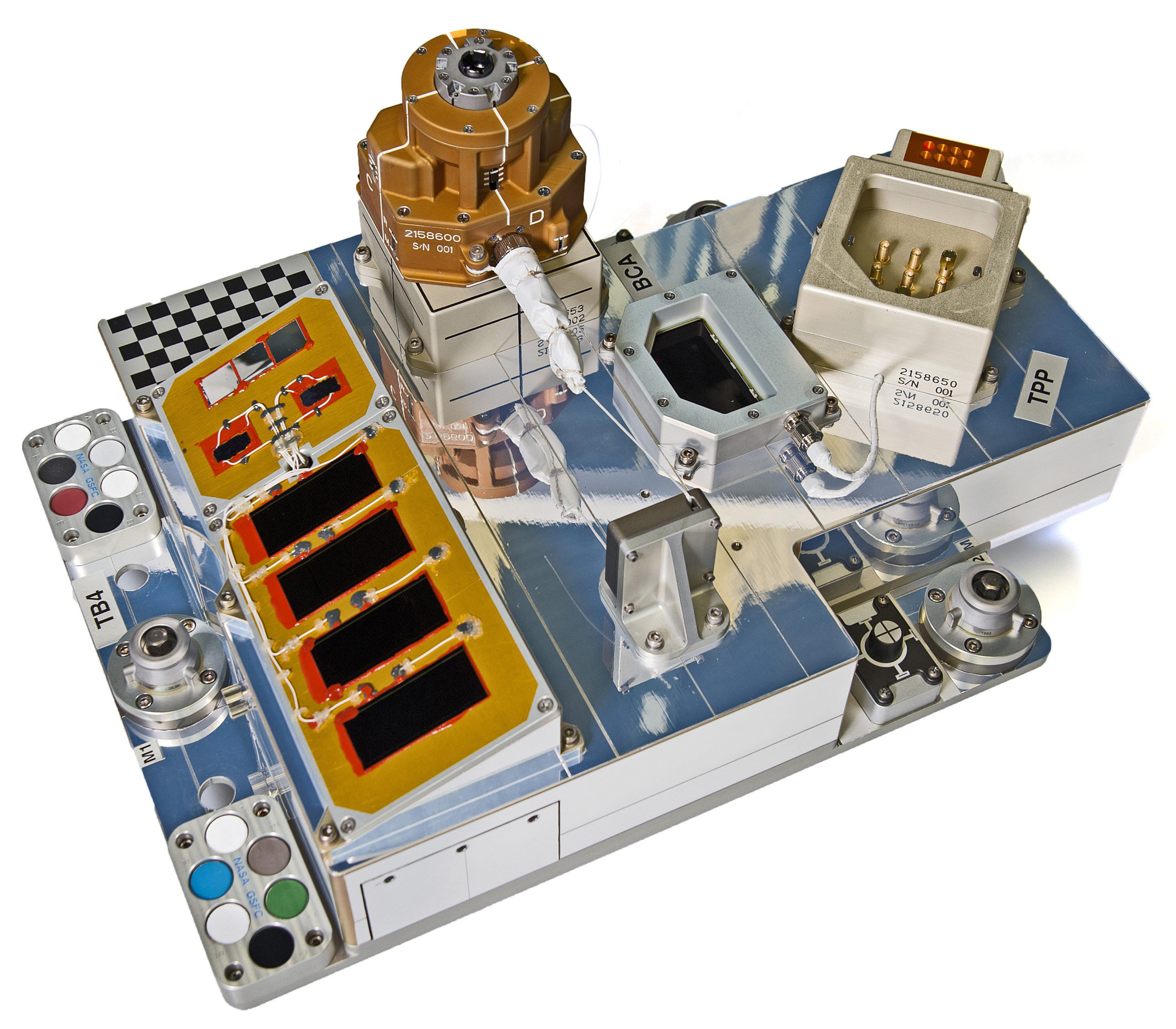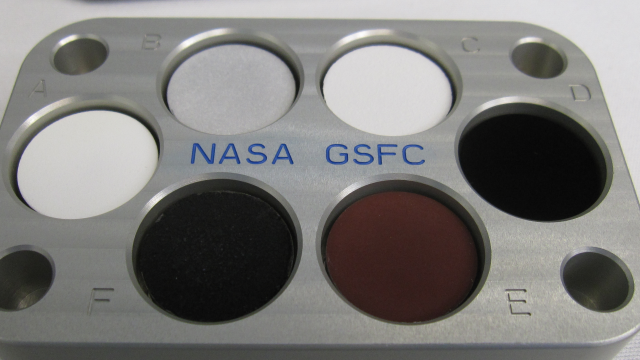A few years ago, we looked at NASA’s long project to design a paint so black, it would absorb nearly every bit of light around it (that’s it above, in the “D” spot). Now, NASA has finally launched the stuff into space — which means that the six-year effort to make it is finally paying off. So, why is this such a vital project for NASA?
Peering even deeper into space than we ever have, in some ways, follows similar rules to photography here on Earth — this deployable umbrella, for example, will block light from stars that might be outshining exoplanets. Taking photos of planets this distant requires careful staging and a total absence of light, which can “overwhelm faint signals that sensitive detectors are supposed to retrieve.”
Enter NASA’s paint, which as Gizmodo’s Jesus Diaz explained when the paint was first unveiled by NASA in 2010, is made from carbon nanotubes that are 10,000 times thinner than a human hair. Light enters into this warren of tubes, where it ricochets back and forth until it’s completely absorbed. As NASA explains in a new update on the project, our eyes interpret this collection of tubes as utter darkness:
The coating’s super-absorbency is due to the fact that the nanotubes are mostly empty space; however, the carbon atoms that occupy this fine forest of tiny nested tubes absorb the light and prevent it from reflecting off surfaces. Because only a tiny fraction of light reflects off the coating, the human eye and sensitive detectors see the material as black — in this case, extremely black.
Now that NASA has a functional prototype, it’s time to test it in space. On July 29th, the the Automated Transfer Vehicle launched carrying samples of the stuff to the ISS, where it docked on August 12th. There, astronauts will conduct tests on the paint, which absorbs 99.5 per cent of visible light (and 99.8 per cent of longer wavelength light).

The “task board” to be installed on the orbital outpost’s Express Logistics Carrier 4. “The Materials Coating Experiment can be seen on the left,” says NASA. Image Credit: NASA Goddard/Chris Gunn
But wait. That leaves .5 per cent of light that this super-black paint can’t contain. Didn’t we just learn that UK scientists had developed a similar carbon nanotube paint that takes care of everything except 0.035 per cent of visible light? Is NASA settling for a less absorbent paint? And why? Well, as NASA Principal Investigator John Hagopian explains, this test is all about finding a coating that’s durable, too. “We are focusing on making our coatings robust and not necessarily the blackest for now,” he says. “What we lacked in our development program was access to space. Now we’ll have that.”
Over the next year, the coating will undergo extreme tests — including things like being blasted with radiation and “atomic oxygen, that reacts with spacecraft materials and corrodes them.” If it stands up to the challenge, this is the stuff that could eventually coat everything from cubesats to probes. One day, murdered-out spacecraft may be the norm. [NASA]
Picture: NASA/Bill Squicciarini
